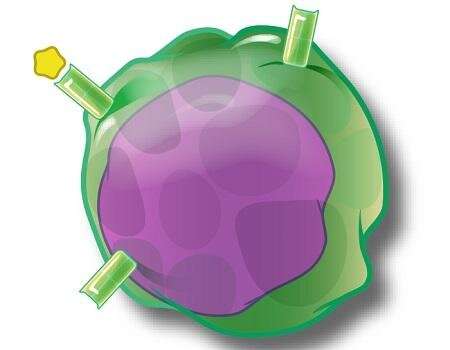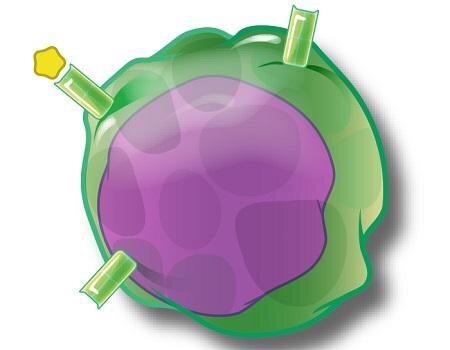Study identifies two different regulatory T cell populations

A regulatory class of human T cells descends from two different origins, one that relates to autoimmunity and one that relates to protective immunity, according to a new study led by Children’s Hospital of Philadelphia (CHOP). The findings, published today in Science Immunology, could pave the way for new treatments for autoimmune diseases that target the immune system selectively.
“When it comes to autoimmunity, the prevailing wisdom has been that the only way to stop inflammation is to suppress the immune system broadly, making patients more susceptible to infection,” said senior author Neil D. Romberg, MD, an attending physician in the Division of Allergy and Immunology at Children’s Hospital of Philadelphia. “However, that is only true if all T cells come from the same place. What this study shows is that there are two different T cell lineages, which means you might be able to have your cake and eat it too—suppressing inflammation due to autoimmunity while allowing T cells that fight infection to thrive.”
Germinal centers (GCs) are spherical collections of cells inside tonsils, lymph nodes, and the spleen that orchestrate interactions between T follicular helper (Tfh) cells and B cells. The action within these GCs is locally governed by FOXP3+ T follicular regulatory (Tfr) cells. Although the proper function of Tfr cells is likely important to immunologic health—and their dysfunction a potential contributor to various disease states—few studies have assessed the biologic roles of human Tfr cells and none have addressed where they come from or how they develop within tissues.
To solve this problem, the researchers, led by Carole Le Coz, Ph.D., a former postdoctoral researcher in the Romberg Lab, used a combination of computational, in vitro, and in vivo techniques to describe the origins, functions, and positions of Tfr cells within GCs. Since GCs are located in secondary lymphoid tissues like lymph nodes, spleens, and tonsils, the researchers analyzed tonsils that had been removed from healthy donor patients.
Using an interlocking suite of single cell technologies, the researchers were able to show that there is one subpopulation of Tfr cells that is induced by Tfh cells, which they called iTfrs, and another subpopulation that were “naturally” derived from Tregs, a subpopulation of T cells that are responsible for moderating the immune system, which they called nTfrs. In doing so, the demonstrated that there are two developmental trajectories: Treg-to-nTfr and Tfh-to-iTfr.
Once the researchers identified these two subpopulations of Tfr cells, they analyzed whether these two regulatory T cells express the surface protein CD38 differently. They found that iTfr cells express CD38, whereas nTfr cells do not. They were also able to catalog the precise location of these different subpopulations within the GCs, in addition to demonstrating their developmental path and ability so support B cell function.
“This study raises the question of whether we could selectively deplete iTfr cells through anti-CD38 treatments, while leaving nTfrs intact—using a silver bullet rather than a bomb to target specific T cells,” Dr. Romberg said. “A similar approach could also potentially be used in a therapeutic context to boost immunity in patients with weakened immune systems.”
More information:
Carole Le Coz et al, Human T follicular helper clones seed the germinal center-resident regulatory pool, Science Immunology (2023). DOI: 10.1126/sciimmunol.ade8162. www.science.org/doi/10.1126/sciimmunol.ade8162
Journal information:
Science Immunology
Source: Read Full Article



